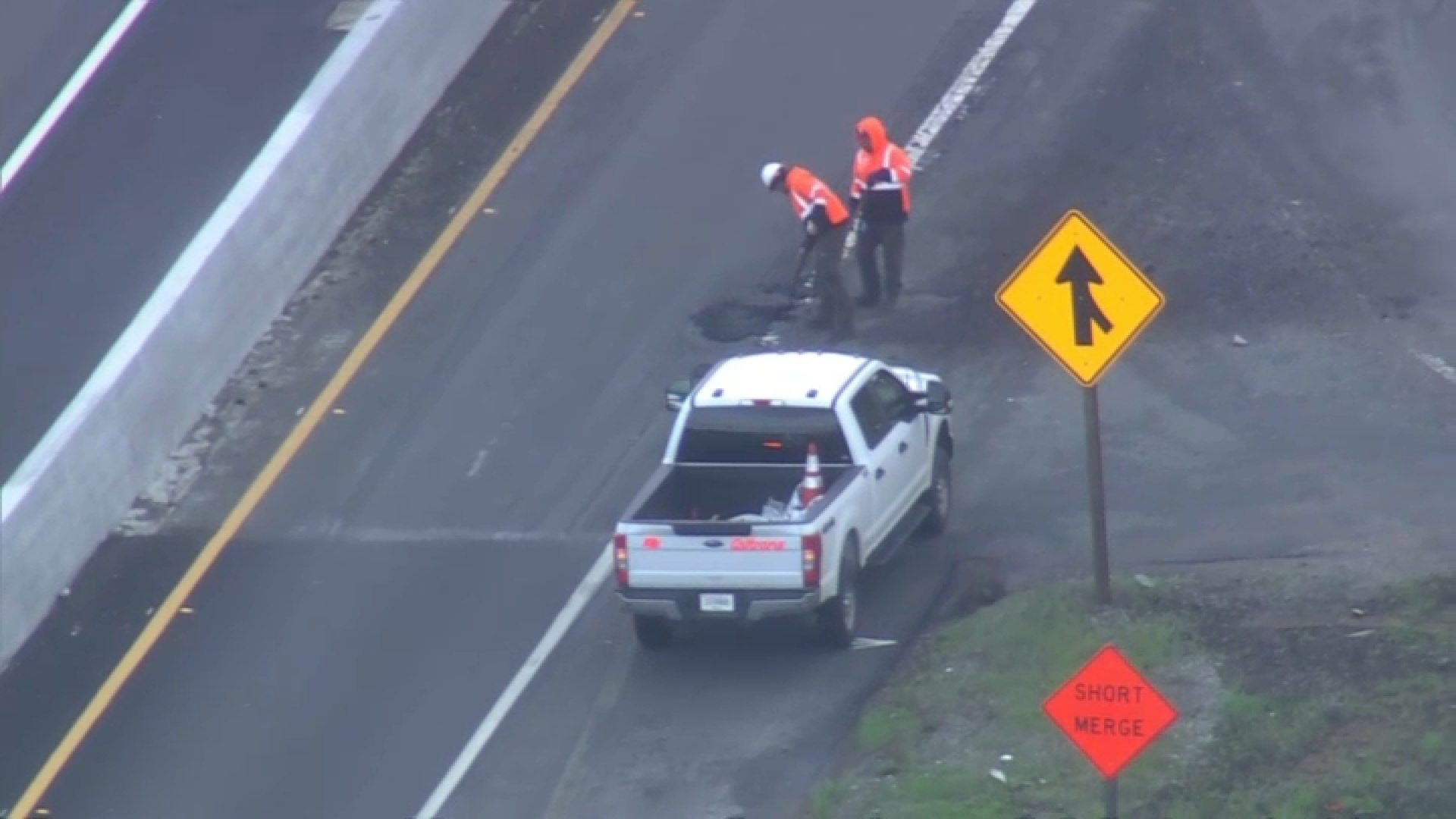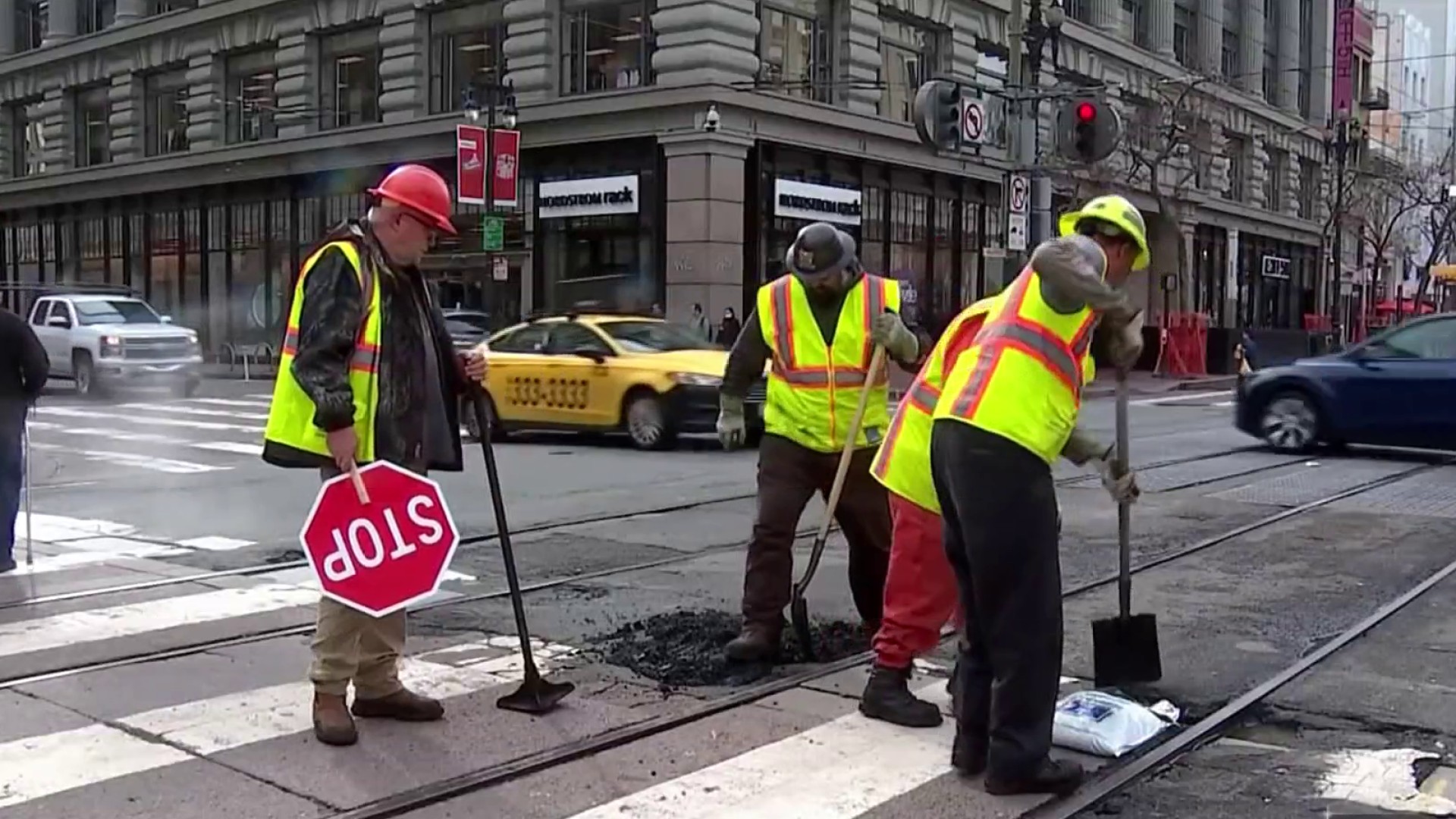To say the back, to back, to back, to back winter storms left an impression on Bay Area roads is an understatement.
Caltrans spokesman Hector Chinchilla said the agency had recorded approximately 7,325 potholes since the start of 2023.
“Statewide, 44,293 potholes,” he said.
And that’s just on state roads. There are even more on city streets and county roads.
Get a weekly recap of the latest San Francisco Bay Area housing news. Sign up for NBC Bay Area’s Housing Deconstructed newsletter.
“Busy, busy, busy,” said Christopher Brown of San Francisco Public Works in a January interview.
No matter where they appear, potholes can do damage: rims ruined, tires tattered, shocks shot.
“[It] destroyed my left front tire,” said Highway101 driver Greg Sereno.
State's Invitation: Apply for Reimbursement
Where the rubber meets the road, government has maintenance responsibility, plus possible liability when potholes damage cars. For example, Caltrans invites you to apply for reimbursement if a pothole damages your car on a state road.
“If you do feel that a negligent pothole by Caltrans caused damage to your vehicle, please submit a form,” Chinchilla said.
That’s what Mike O’Rourke in Morgan Hill did.
“It was a big pothole,” he said. “It really was.”
He was driving his convertible, a 2021 Chevy Corvette hardtop, north on Highway101 south of Gilroy. Suddenly, a drop.
“It made a lot of noise. We heard the suspension bottom out,” O’Rourke said.
The pothole damaged the front left tire, which cost a pretty penny to replace: a little more than $400.
An Admission and a Denial All in One
Mike applied for reimbursement. Soon, an envelope arrived.
“I just assumed I had a check in there,” he said. “I didn’t have a check. I had this letter telling me that they were aware there had been a pothole there and were not going to honor my claim on it.”
Denied.
So, who decides whether Caltrans is negligent? Caltrans. In Mike's letter, Caltrans acknowledges it knew about the Highway 101 pothole and later fixed it. But Caltrans ruled Caltrans was not negligent.
“I don’t see how they’re not negligent,” Mike said. “If it’s not them, who is it?”
He wanted answers.
“I wasn’t happy,” he said. “Which is why I reached out to [NBC Bay Area Responds].”
Rain Comes Down; Claims Go Up
We wanted to know how many others are in Mike’s shoes. Caltrans told us it gets about 1,000 pothole damage claims each year.
2023 has not been a good year. When the winter rain came down, pothole claims shot up. Caltrans says it’s already received 459 claims between just January and early February.
We wanted to know how often Caltrans pays -- or doesn’t pay -- claims like Mike’s.
Caltrans did not provide us numbers in time for this story.
“Everything is case by case,” is all Chinchilla would say.
We filed a formal request to get Caltrans’ payment rate for a follow-up story.
Caltrans’ Chinchilla told us two main factors determine Caltrans’ liability -- and whether it pays out tax dollars to repair your car. First: awareness. Caltrans is not liable if it’s not aware of a pothole.
“We don’t know what we don’t know,” Chinchilla said.
But even if Caltrans knows about a pothole, it might not be on the hook.
“There is a reasonable time that we are allocated to go and fix the pothole,” Chinchilla said.
Officially, state law says Caltrans gets “sufficient time” to respond. But the 1963 law doesn’t define what “sufficient” is. That’s murky.
Mike insists his case is not.
“It’s so clear cut and dry in my mind,” he said.
But here’s the thing: his rejection letter doesn’t include any specifics about what Caltrans knew or when, so no way to know if it filled the pothole in “sufficient time.” Mike sees room for improvement with the pothole process.
Claims, for sure. Prevention, too.
“Maybe we can do a better job,” he said. “I think they have something like a $17 billion budget each year.”
It’s actually now more than $20 billion dollars. That’s overall, though, not just for potholes.
Car Insurance Can Help – If You Have the Right Coverage
If you hit a pothole, you can file a claim with your own insurance company.
If you have collision coverage, your insurance might pay for repairs now.
The insurance company can then try to get reimbursed by the government later. If that happens, you can ask for your deductible back.
Maximize Your Chances Government Pays (No Guarantees)
If you file a government claim yourself, you’ll maximize the chances you get paid if you take a few key steps.
Take photos of the damage.
Get an itemized repair estimate or receipt.
And pinpoint the pothole’s exact location.
When you file a claim, keep a copy of the form for yourself.
Don't wait. State law only gives you six months to file.
Finally: if you see a pothole, Caltrans says report it ASAP. Their reps say the best reports include an exact location.



